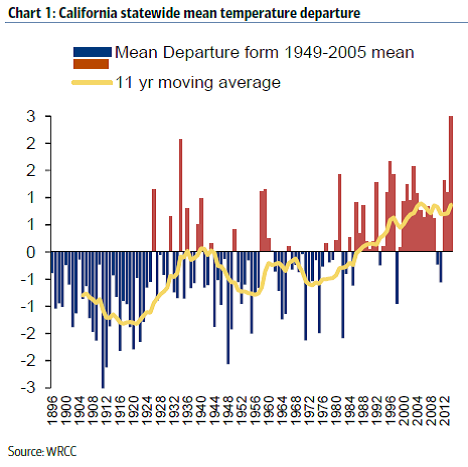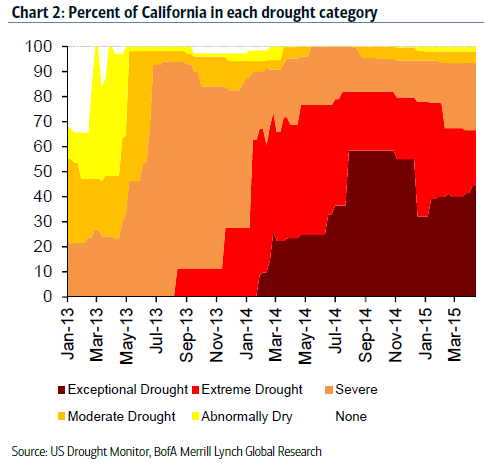Dry Hole
Southern California just had the wettest July on record, the Angels were rained out of a home game for the first time in 20 years, and we’re all getting excited that a strong El Niño is developing for the winter.
But let’s all take a deep breath. The record July rain at LAX was about one-third of an inch. That’s about a 15-minute downpour in the rest of the country. It was a little better in San Diego, just over an inch-and-a-half. So, while welcomed, it wasn’t much, especially when we consider the (dry) hole we’re in.
The first chart shows the deviation from the 1949-2005 mean temperature in the state going back 120 years. We are now at the highest temperature in four generations, with a pretty clear upward trend.
The effect has been to extend a drought in both severity and expanse. Nearly half of the state is experiencing an exceptional drought, as the chart below shows.
We pin our hopes for an El Niño this winter on the observation that the current temperature in the Pacific is 2.88 degrees higher than average, close to the 3.06 degree difference measured at the same time and place in 1997, which presaged a huge El Niño event that soaked not just Southern California but the north as well, which is what really matters as that’s where our water supply is.
So, for now, I join with the hopeful that our immediate crisis will soon be relieved. But our enthusiasm should be tempered by the very deep dry hole we’re in. As for resolving our long-term problem, I’m a little less hopeful.



